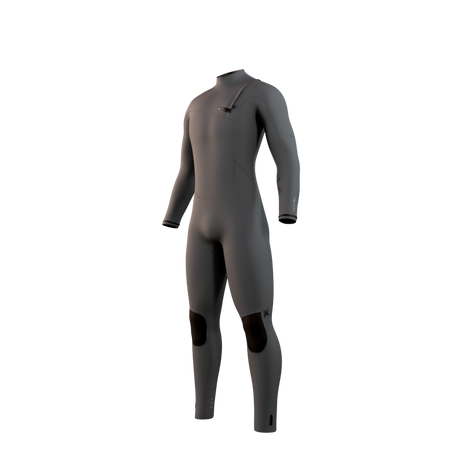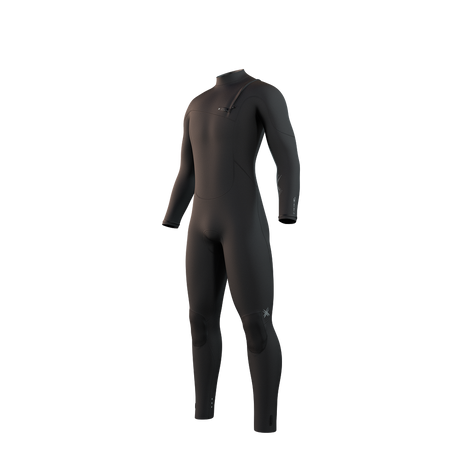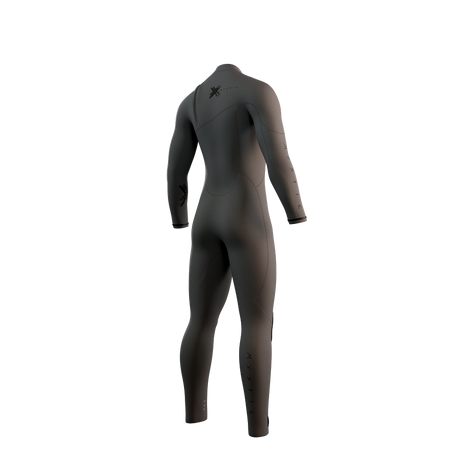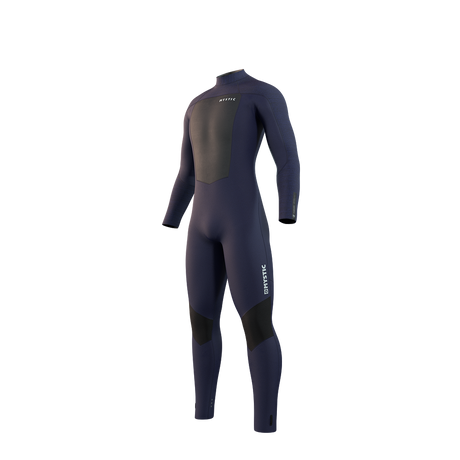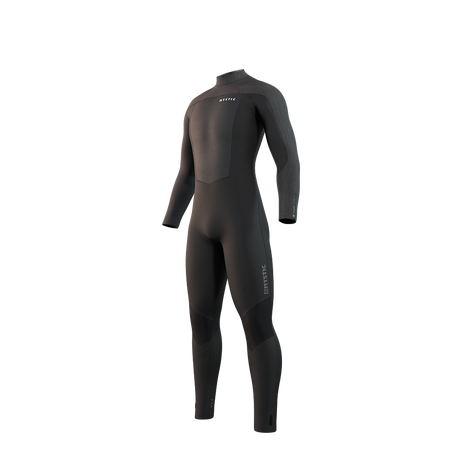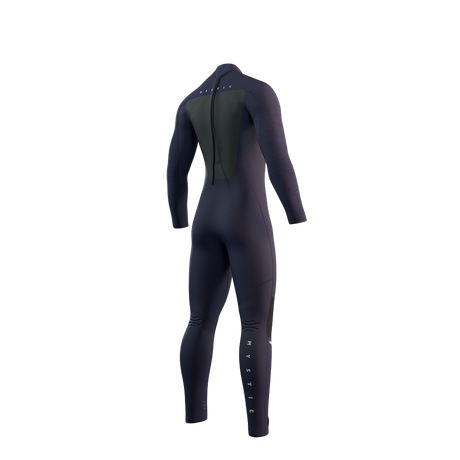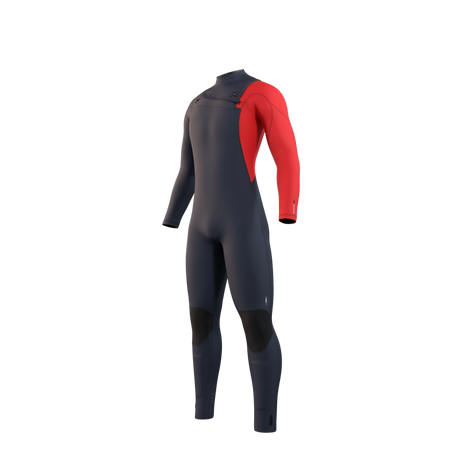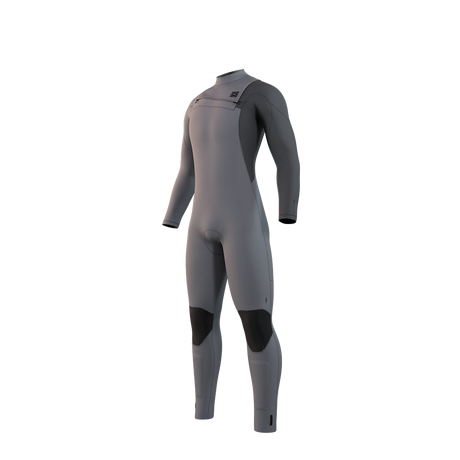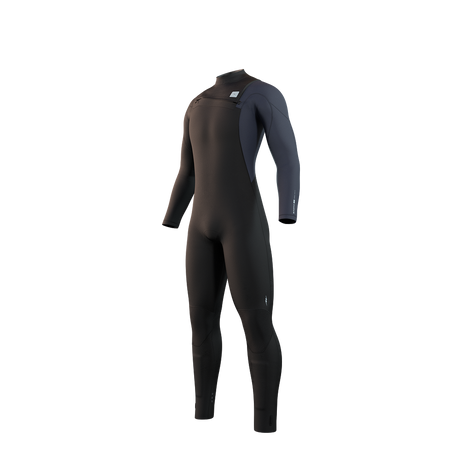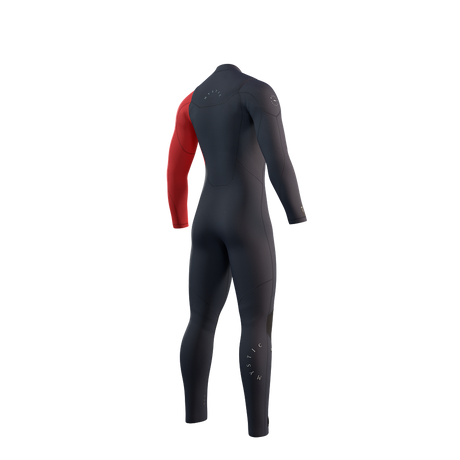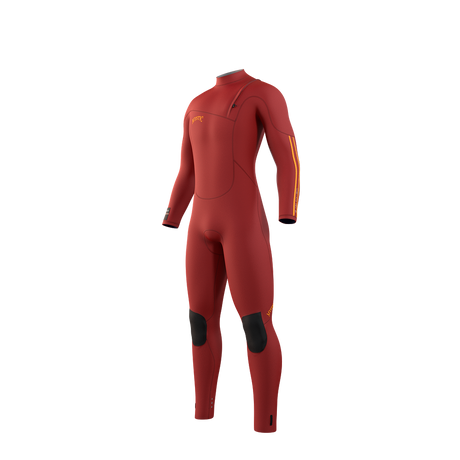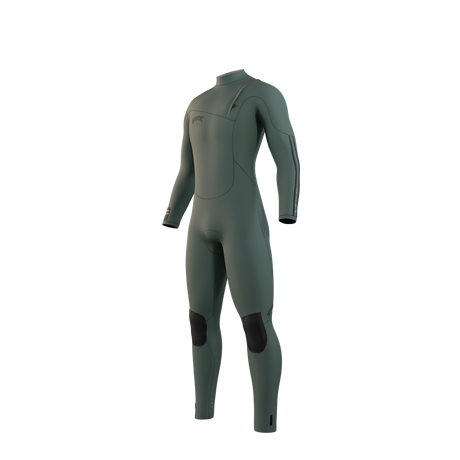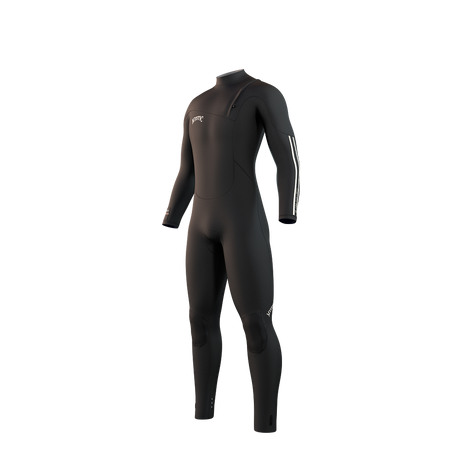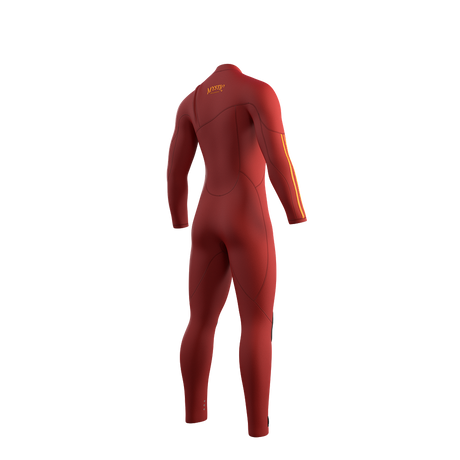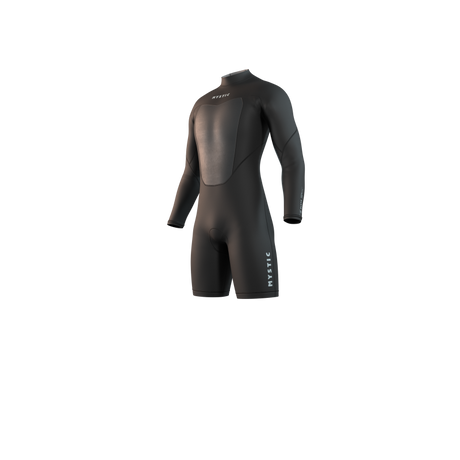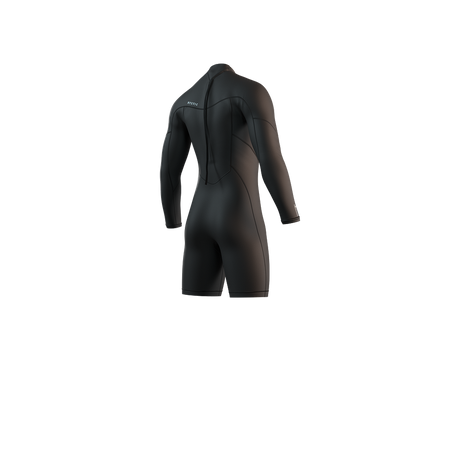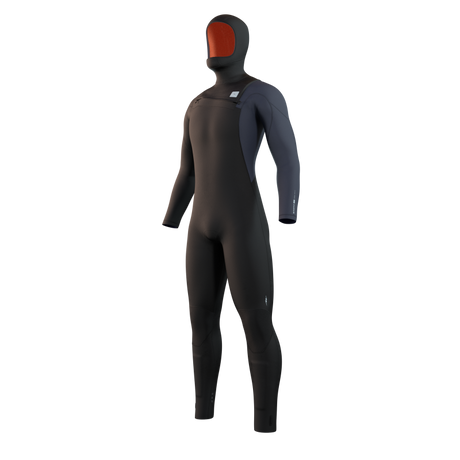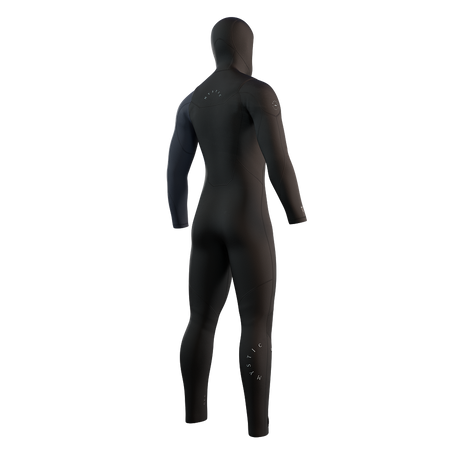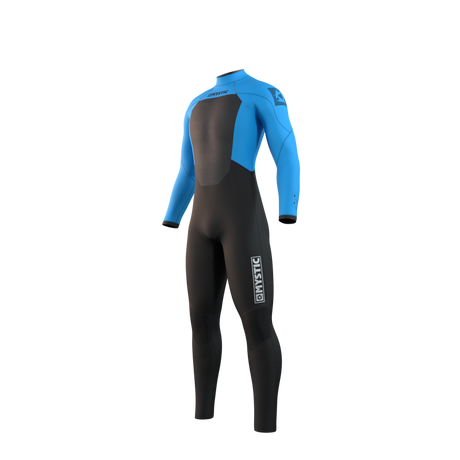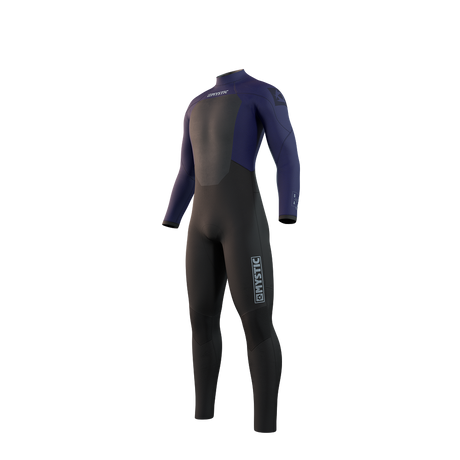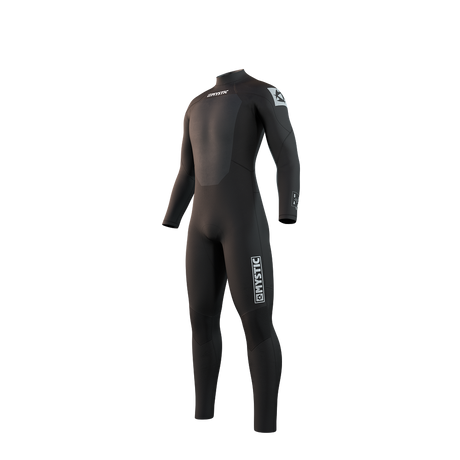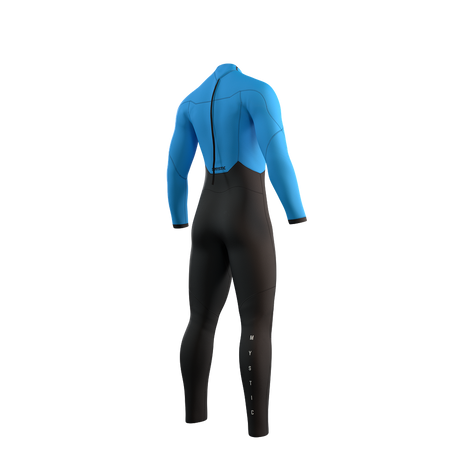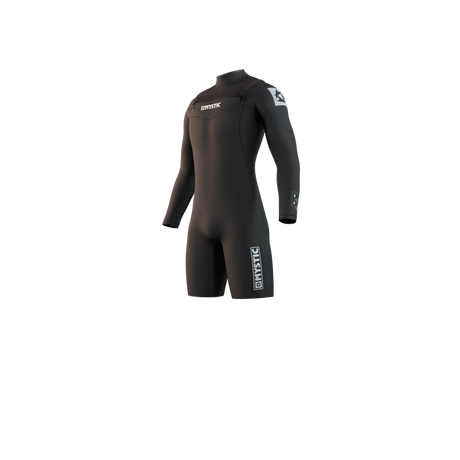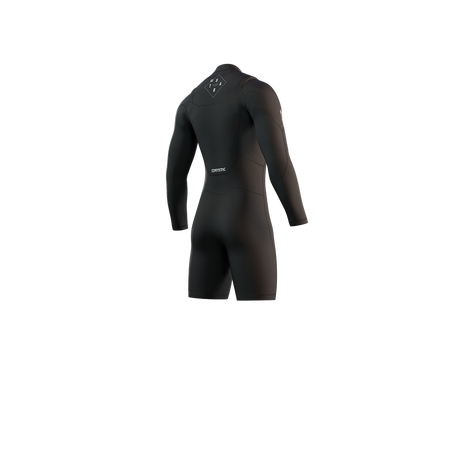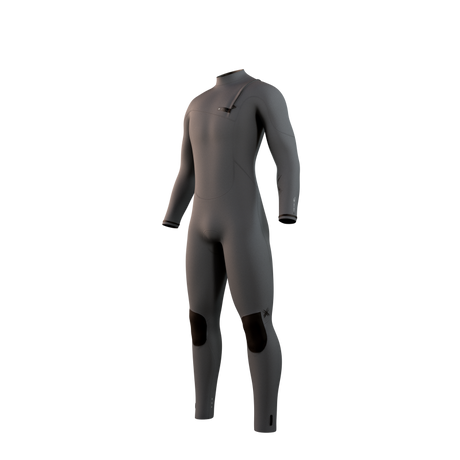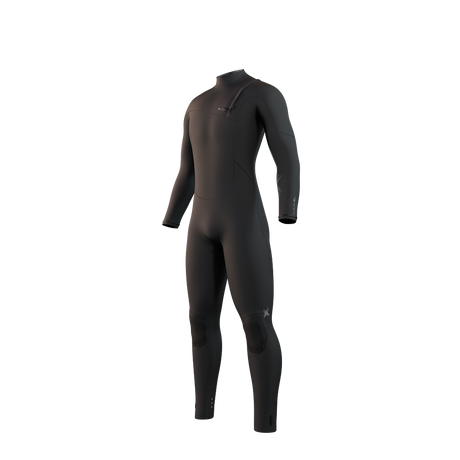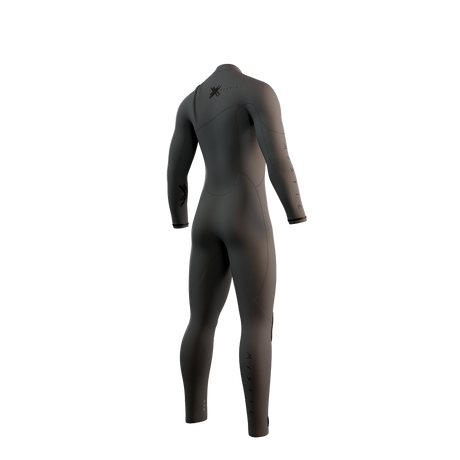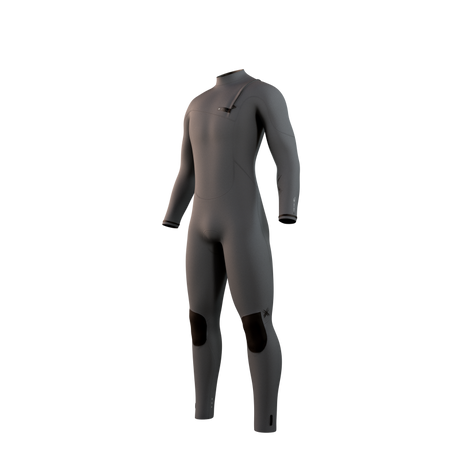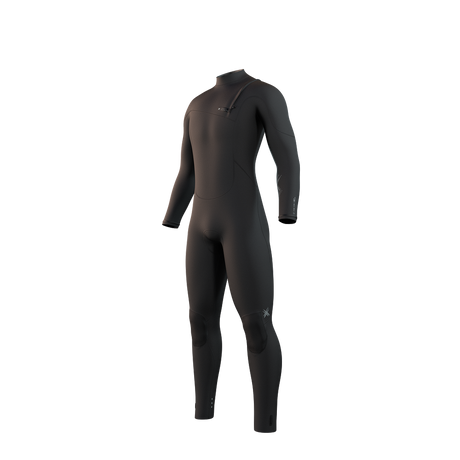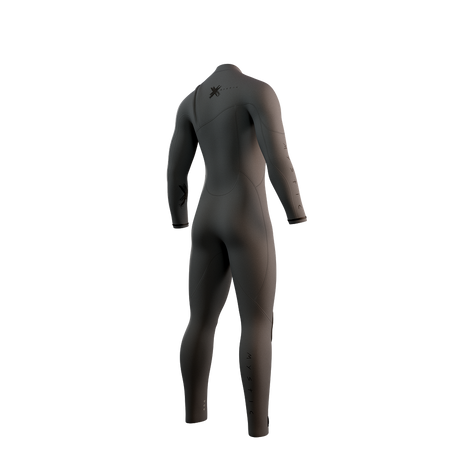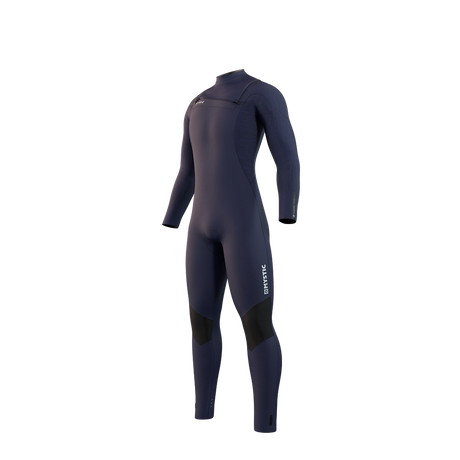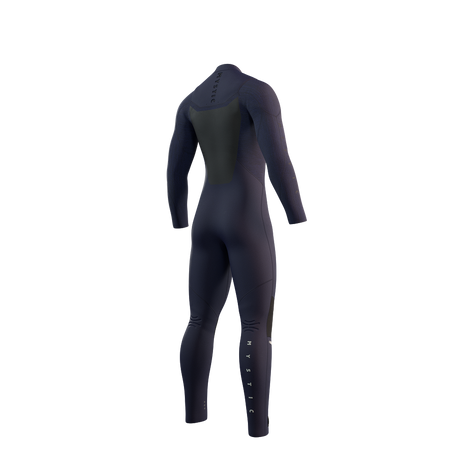Types of wetsuits
There are several types of wetsuits to cover all weather conditions. In the Netherlands, the most common is the fullsuit/steamer with long sleeves and long legs. If you find this type too warm, you can opt for short sleeve, short leg versions, or both, also known as shortyThese are usually slightly thinner than fullsuits, which helps to avoid overheating in summer temperatures. Another advantage is the freedom of movement: the less neoprene you wear, the more freely you can move. However, a thicker suit provides good cushioning in case of a fall.
When choosing the right type of wetsuit, the location of the zipper should also be taken into account, which can be at the front or at the back. These suits, known as front zip o zip trasero, have their own advantages and disadvantages. A front zip offers more freedom of movement compared to the back zip. This is because the back zip it runs the entire length of the back panel, which reduces flexibility in that area. In addition, the back zip can interfere less with the harness. The back zips they tend to be easier to put on, thanks to their wider opening. Below, more details are provided about the different types of wetsuits:
Full suit/steamer
The traje completo o steamer It is the classic wetsuit with long sleeves and legs. This type is mainly used in cold waters, providing enough warmth because the entire body is covered with neoprene, which also offers additional protection in case of a fall. The fullsuit is available in different thicknesses depending on the water temperature and the outside temperature. For example, a suit of 3mm/2mm it is suitable for summer in the Netherlands, which is why it is also called a summer suit. For cooler temperatures, a fullsuit of 6mm/5mm/4mm, and there are even versions with an integrated hood for extremely cold days.
Springsuit
Our favorite summer suit is the springsuit. This suit has long sleeves and short legs, providing sufficient protection against the sun and other weather conditions, keeping you warm while preventing water from entering at the shins/calf level. Additionally, it offers a bit more freedom of movement compared to a fullsuit. This type of suit is available in thicknesses of 4mm/3mm/2mm.
Short arm steamer
The short arm steamer it is very popular among wave surfers. With the arms free, it provides great freedom of movement, making paddling easier. This freedom of movement is also ideal for kitesurfing, and the suit is warmer than a springsuit, offering extra protection for the legs and knees.
Shorty
The shorty it is a wetsuit with short sleeves and short legs, ideal for summer temperatures. It is also available in a long sleeve (L/S) version, where the sleeves are long and the legs are short. This type of suit offers a bit less protection than others, so falls may be felt a bit more. However, it provides much more freedom of movement and protects the torso. Since it does not cover the entire body, it is important to apply sunscreen.
Neoprene jacket
One neoprene jacket it can be a thermal layer that is used on top of or underneath the suit for added warmth. These layers are available in thin versions of neoprene from 0.5 mm up to thick jackets of 5 mm that are worn over the suit. You can also use a thermal shirt as protection against the sun in warm climates.
Long John/Short John
The Long John/Short John is a wetsuit that is no longer widely used for kitesurfing and is more popular in the sailing world. With this suit, the arms are completely free, while the rest of the body is protected, providing enough warmth. The version Short John it has short legs, which makes it ideal for use between sessions.
What determines the quality of a wetsuit?
There are several factors that influence the quality of a wetsuit. The most important are the inner lining, the seams, and the neoprene itself. The inner lining it is crucial because it is in direct contact with the skin. A thick lining is comfortable and helps retain heat, as the water between the suit and the skin heats up better. More expensive suits often have a thick lining in the chest and back panels to keep you warm.
In addition to the lining, the seams they are very important for the insulation capacity of your suit. There are different types of seams, each with its own properties. The number of seams also affects the fit of the suit. A suit with more seams will fit better, but it increases the possibility of leaks. Fewer seams reduce water entry, although they also make the suit somewhat stiffer. The most common types of seams are:
- Overlock
- Flatlock
- Blindstitch
Economic seams
The method overlock is the cheapest and simplest, but also the least effective at keeping water out. This type of seam is usually found in suits from budget manufacturers and is not used for high-end suits. The seams Flatlock, on the other hand, they cut the neoprene pieces at an angle and join them, but they are not very effective at keeping water out, as the seams go through the neoprene, allowing water to enter.
High-end stitching
The seams blindstitch They are, by far, the best way to join neoprene. The seam does not completely penetrate the neoprene, but rather remains halfway. The interior is kept together with glue and seams, providing good insulation and a comfortable fit. High-end suits often use this type of seam, in addition to neoprene tapes that seal the seams to make them completely waterproof. The sealing with Liquid Taped guarantees a 100% waterproof suit, ideal for kitesurfing in winter.
Economic seams
The method overlock it is the most economical and simple form of stitching, but it is also the least effective at preventing water entry. This type of stitching is found in neoprene suits from budget manufacturers (which we do not sell) and is not used in high-end suits. Sometimes, for summer, there is no problem wearing a cheap shorty, but when the weather cools down, we do not recommend these neoprene suits. Additionally, the seams can protrude, causing serious chafing. In the stitching Flatlock, two pieces of neoprene are cut at an angle to fit well, but this method is not very effective, as the seams go through the neoprene, leaving gaps where water can enter. For this reason, Flatlock is only recommended for summer temperatures.
High-end stitching
The seams blindstitched the best way to join neoprene. The thread does not completely penetrate the neoprene, but only halfway. The interior is kept together with glue and seams, providing a soft touch and excellent insulation capability. Higher-priced suits are often sewn with blindstitch, making them more flexible. The downside is that they are slightly less durable, so it is better to put them on more carefully before entering the water. In addition to the stitching, the joints are often glued with neoprene tape to make them more waterproof. Neoprene tape helps make the suit completely waterproof and flexible. The most waterproof way of stitching is Liquid Taped, which guarantees a 100% waterproof suit, ideal for practicing kitesurfing in winter.
